
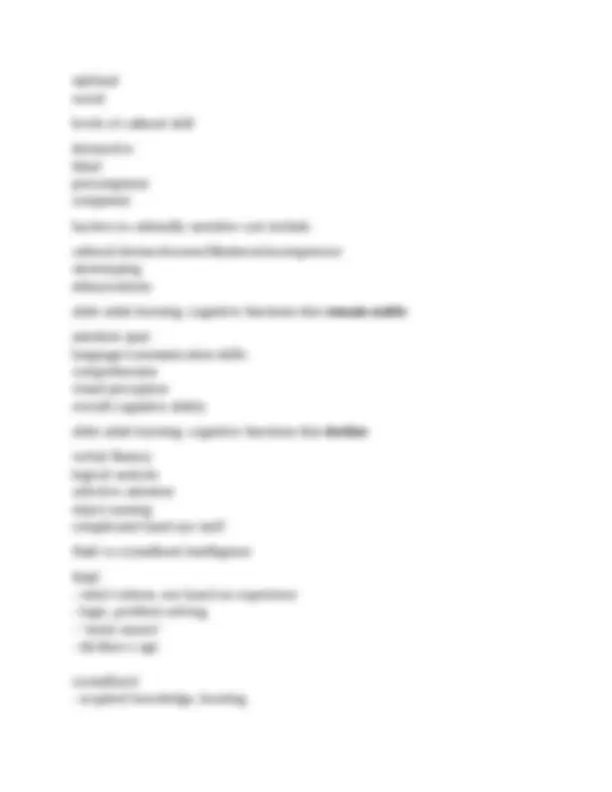
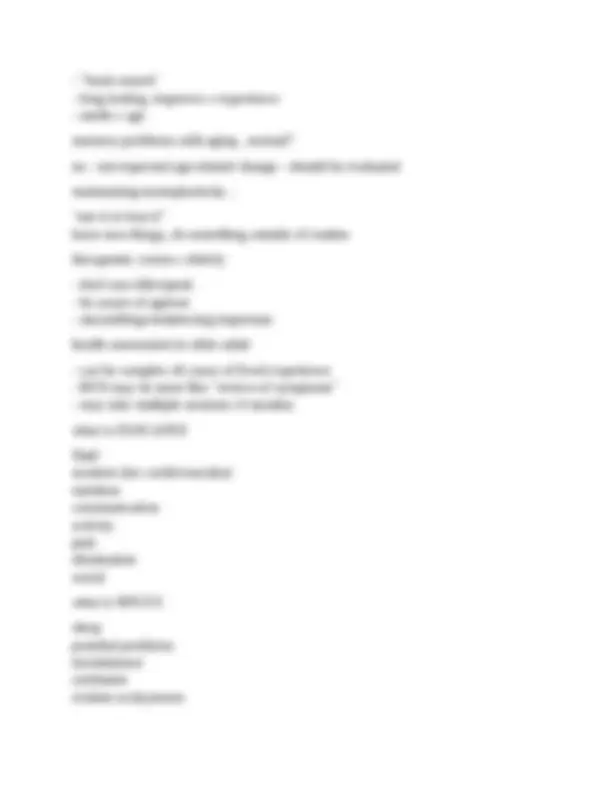
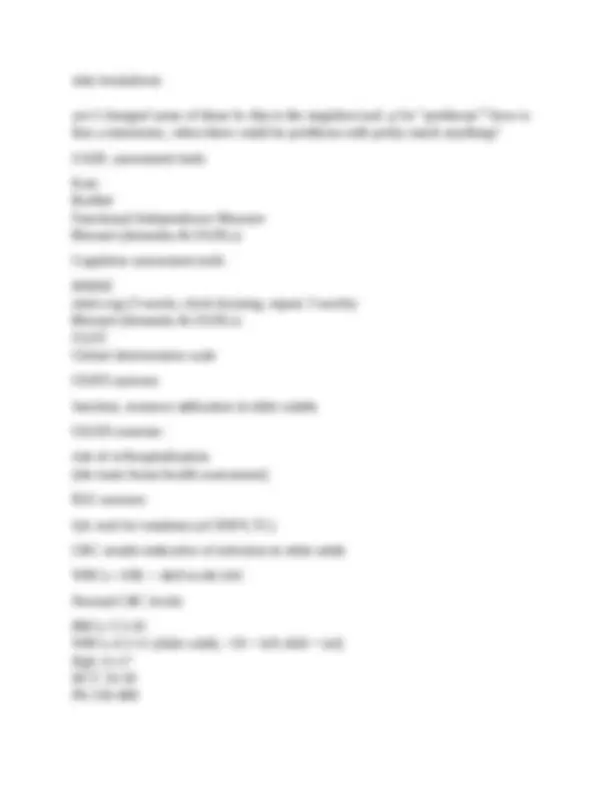
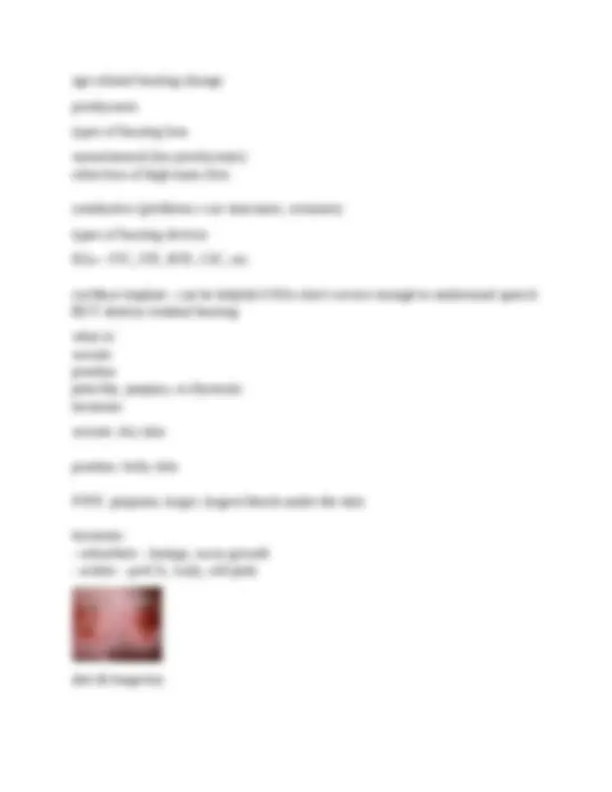
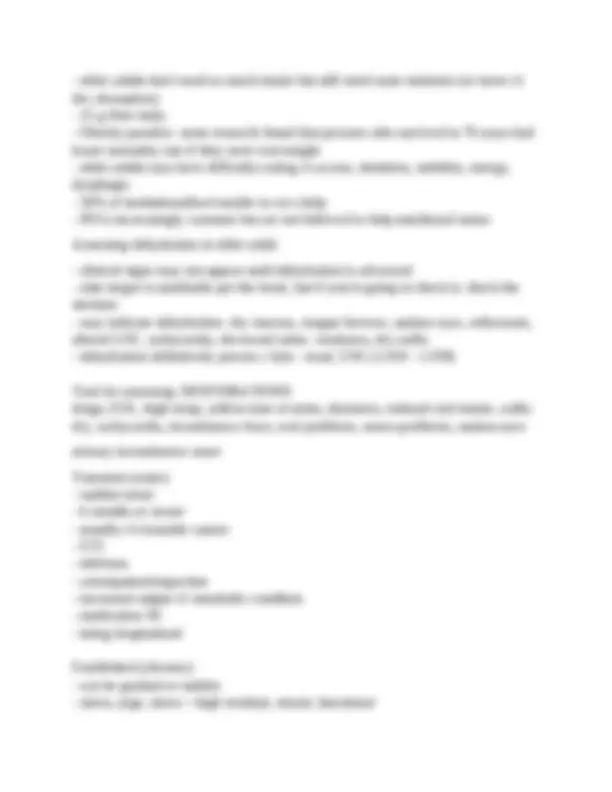
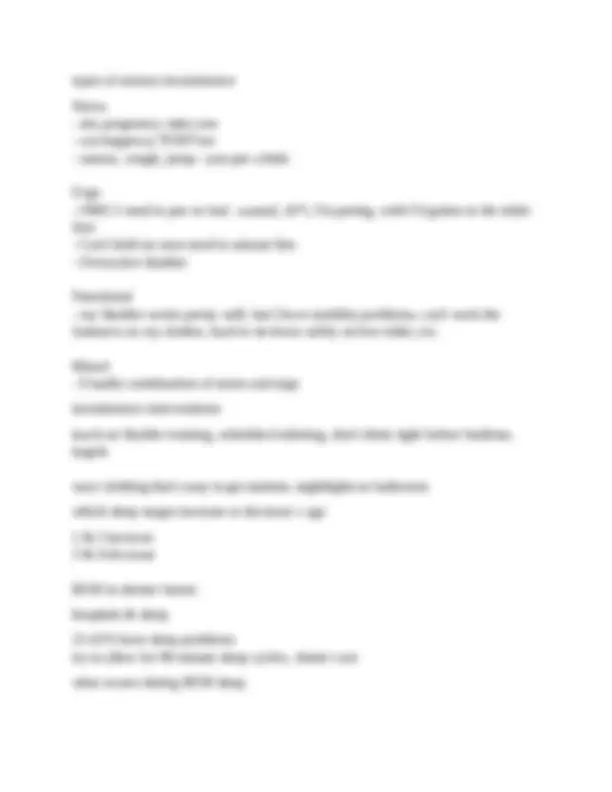
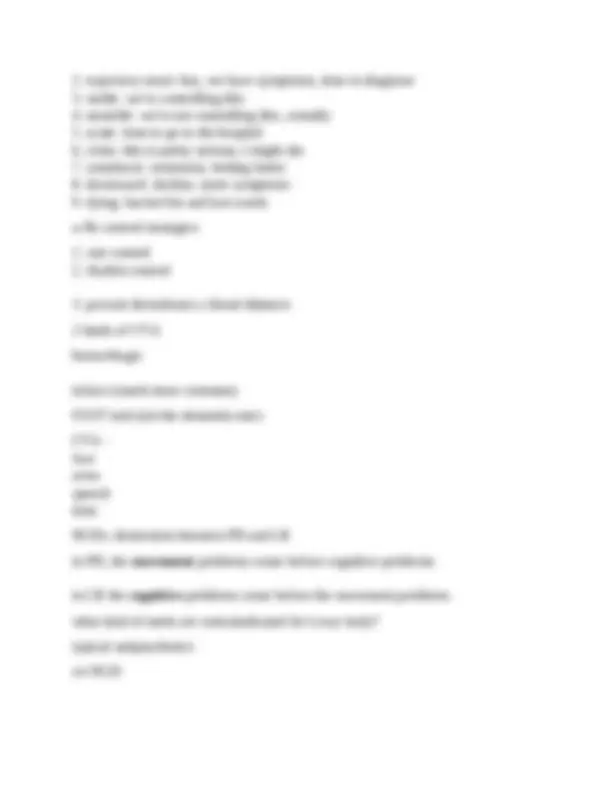
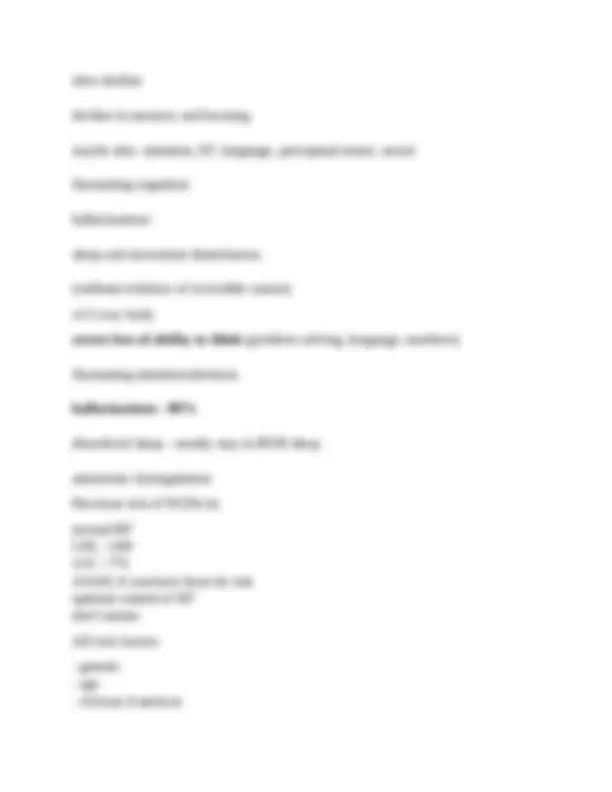
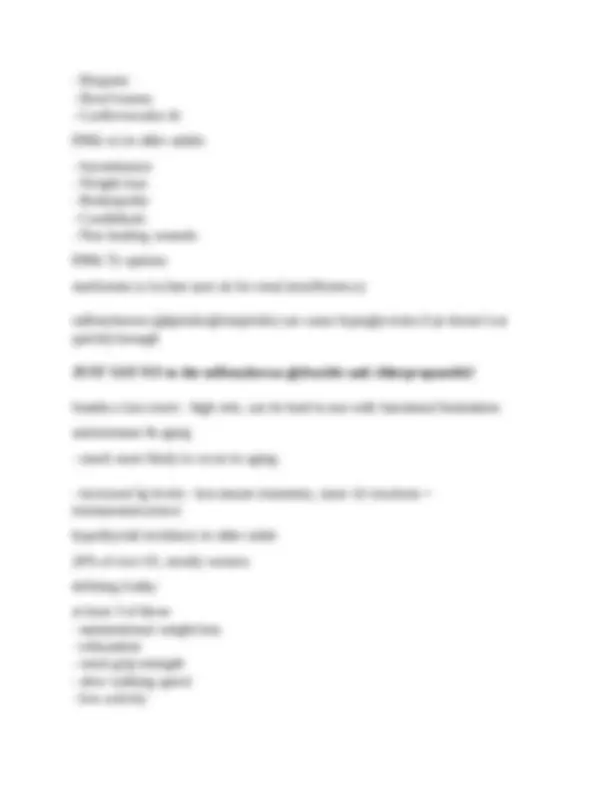
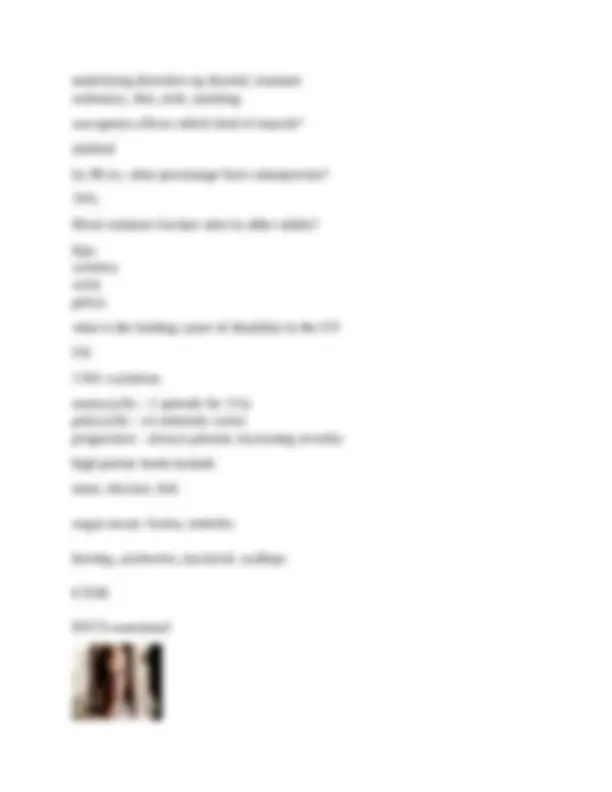
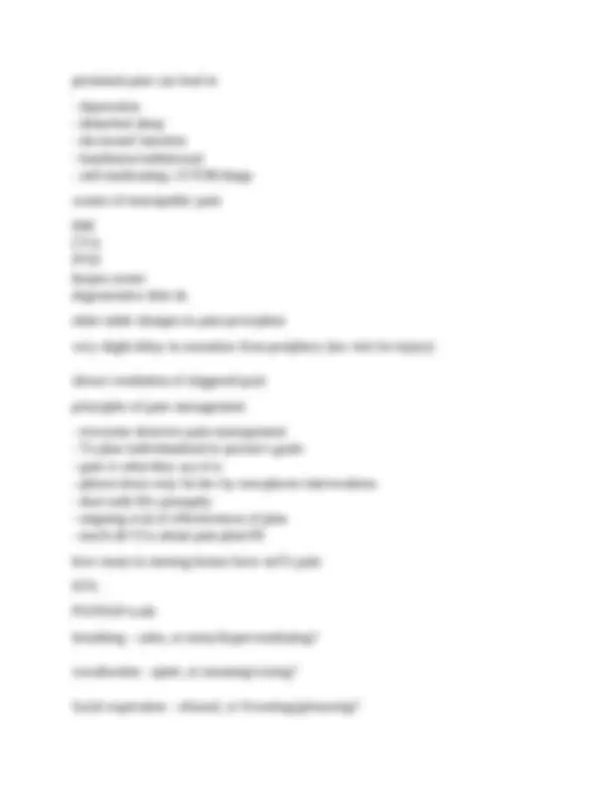
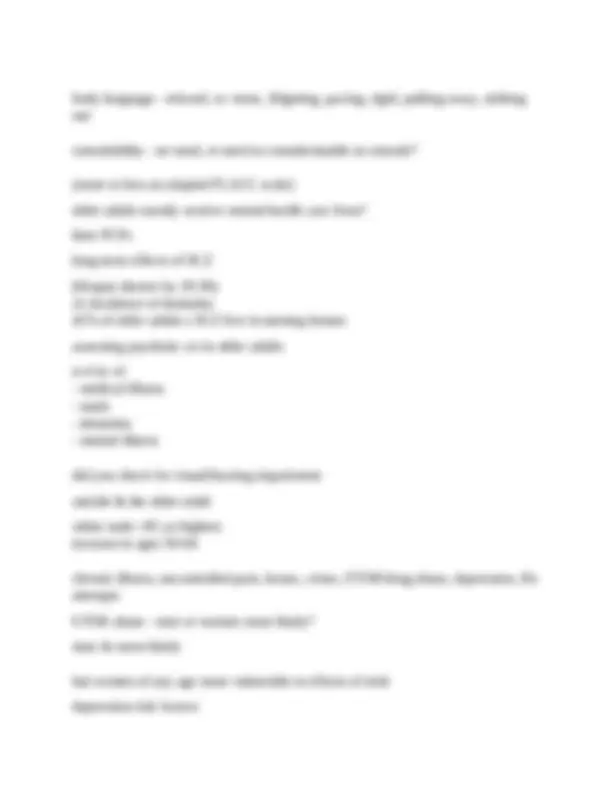
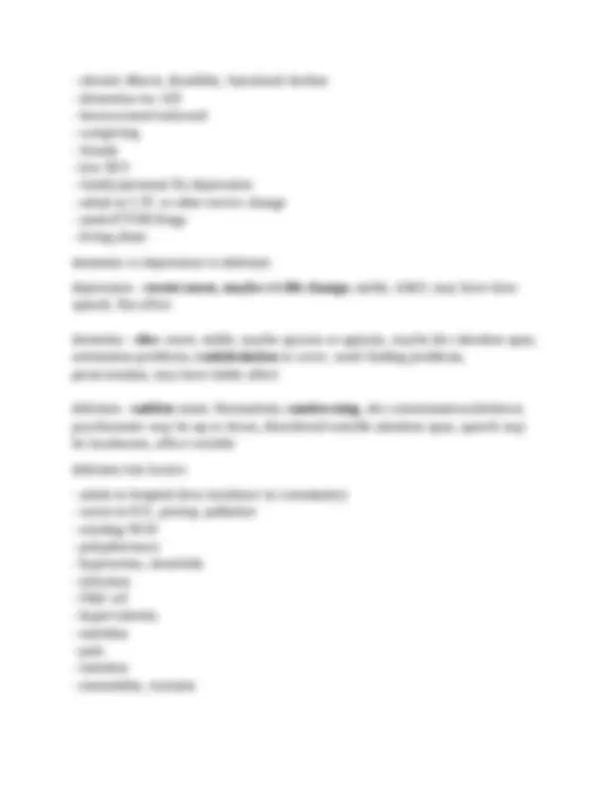
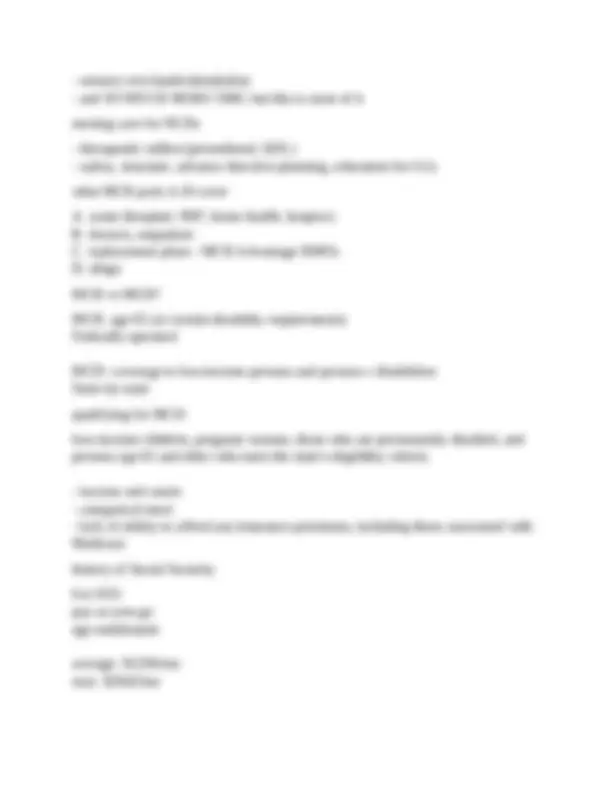
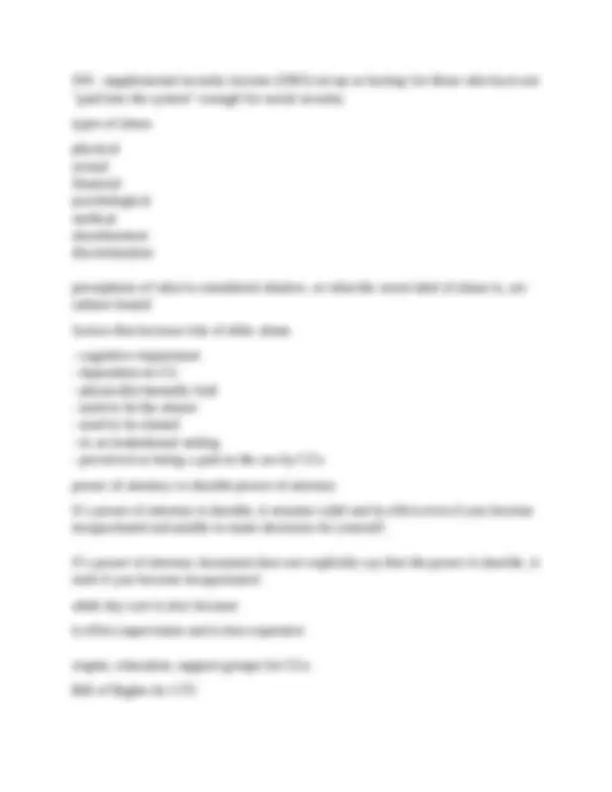
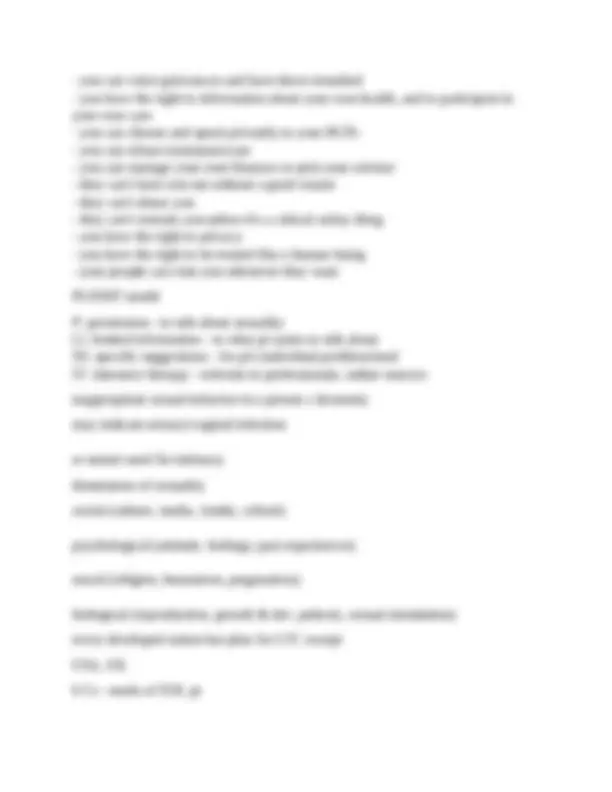
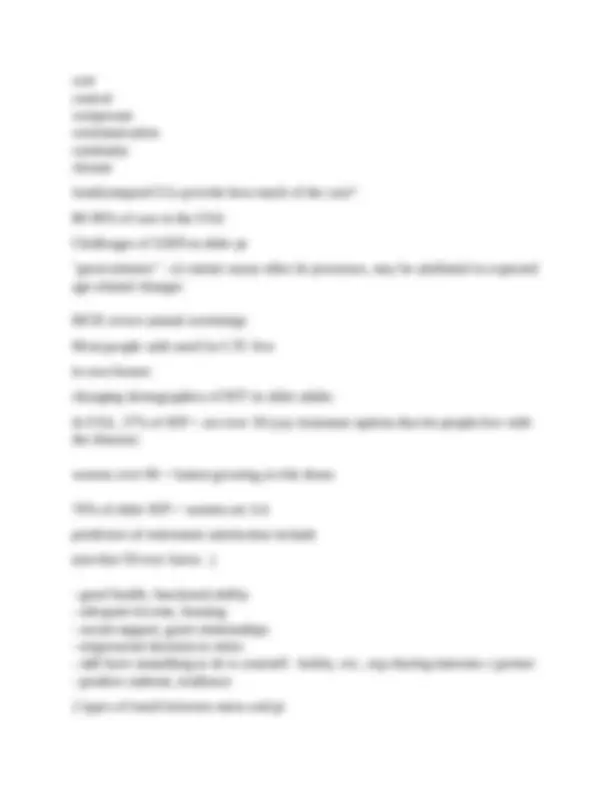
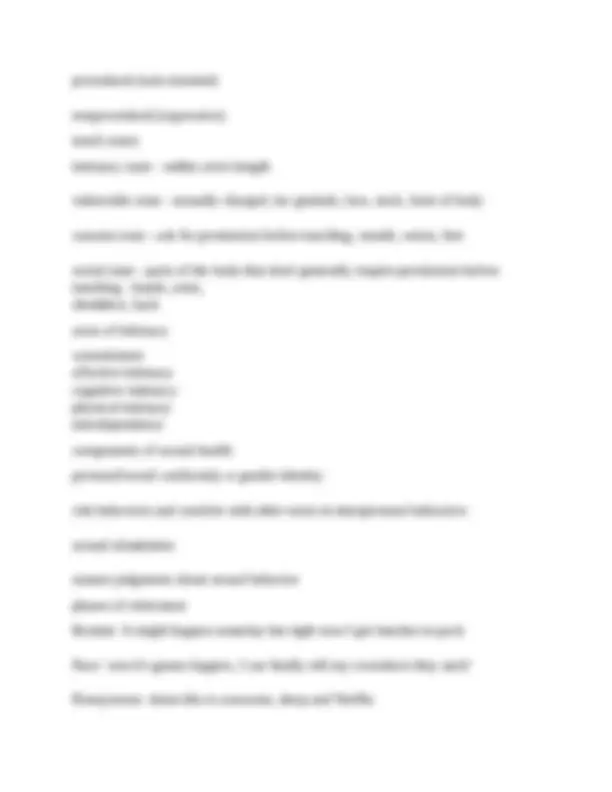
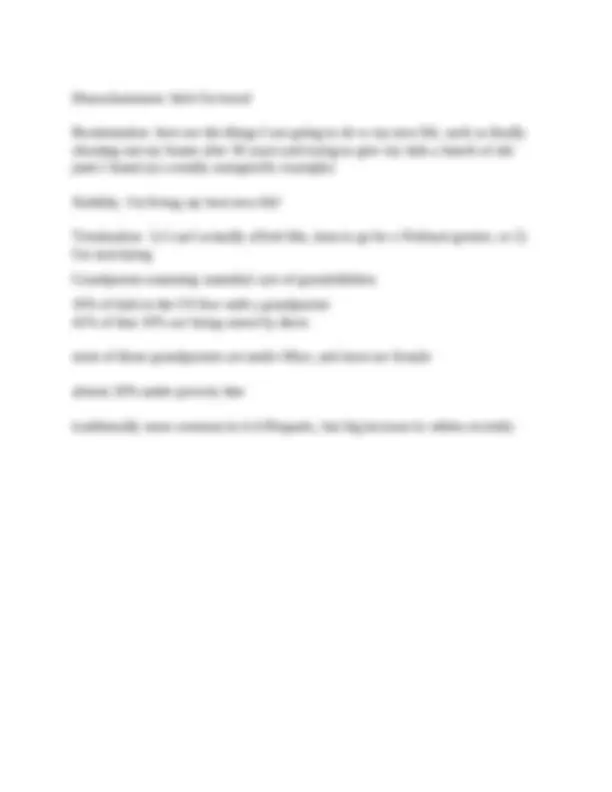


Study with the several resources on Docsity

Earn points by helping other students or get them with a premium plan


Prepare for your exams
Study with the several resources on Docsity

Earn points to download
Earn points by helping other students or get them with a premium plan
Community
Ask the community for help and clear up your study doubts
Discover the best universities in your country according to Docsity users
Free resources
Download our free guides on studying techniques, anxiety management strategies, and thesis advice from Docsity tutors
A comprehensive overview of healthy aging, covering various aspects from grief and palliative care to cognitive functions, sleep, and fall prevention. It includes key concepts, assessment tools, and interventions for healthcare professionals working with older adults. The document also explores age-related changes in vision, hearing, and skin, as well as dietary considerations and the importance of maintaining neuroplasticity. It is a valuable resource for students in healthcare fields, particularly those interested in geriatrics and gerontology.
Typology: Exams
1 / 27

This page cannot be seen from the preview
Don't miss anything!




















Types of grief anticipatory - when you know you're about to have a loss of some kind (not just death - moving, amputation, whatever) acute shadow - chronic, normal - intermittent sadness often triggered by events complicated - acute that doesn't lessen, equilibrium remains elusive - guilt, anger, ambivalence toward lost person unresolved disenfranchised - loss can't be openly mourned - eg capital punishment or relationship not socially accepted (used to be v common in era when LGBT+ not accepted) what is palliative care focus is on providing comfort and increasing QOL prevent/minimize suffering can be offered concurrently with life-prolonging/stabilizing care, or can be purely comfort-related with no curative measures taken (hospice care provides palliative care) hospice guidelines
morphine
skin breakdown yes I changed some of these bc this is the stupidest tool. p for "problems"? how is that a mnemonic, when there could be problems with pretty much anything? I/ADL assessment tools Katz Barthel Functional Independence Measure Blessed (dementia & I/ADLs) Cognition assessment tools MMSE mini-cog (3 words, clock drawing, repeat 3 words) Blessed (dementia & I/ADLs) FAST Global deterioration scale OARS assesses function, resource utilization in older adults OASIS assesses risk of re/hospitalization (the main home health assessment) RAI assesses QA tool for residents (of SNF/LTC) CBC results indicative of infection in older adult WBCs >10K + shift to the left Normal CBC levels RBCs 3.5- WBCs 4.5-11 (older adult, >10 + left shift = inf) Hgb 11- HCT 35- Plt 150-
pharmacodynamics: what the drug does to the body (dynamic - creates a state change in the body) Beers list identifies potentially inappropriate medications increased safety concerns in older adults issues c herbal supplements
age-related hearing change presbycusis types of hearing loss sensorineural (inc presbycusis) often loss of high tones first conductive (problems c ear structures, cerumen) types of hearing devices HAs - ITC, ITE, BTE, CIC, etc. cochlear implant - can be helpful if HAs don't correct enough to understand speech BUT destroy residual hearing what is: xerosis pruritus petechia, purpura, ecchymosis keratosis xerosis: dry skin pruritus: itchy skin P/P/E: pinpoint, larger, largest bleeds under the skin keratosis:
types of urinary incontinence Stress
NTs replenished memory is transferred from short term to long term OSA frequency? can lead to? 25% older adults R side failure CVA DMii death what is first-line intervention for OSA CPAP mask exercises for OA strength balance OA - low impact, strengthen muscles that support joints strength - weights, resistance bands, Pilates, home/yard work balance - tai chi, yoga, tip toe stand, leg raises, hip extensions fall risk factors decreased visual acuity medications weakness decreased balance home safety chronic health conditions (eg PD) Extrinsic - things like clutter, rugs, etc. Intrinsic - things within like dizziness fall interventions
slow decline decline in memory and learning maybe also: attention, EF, language, perceptual motor, social fluctuating cognition hallucinations sleep and movement disturbances (without evidence of reversible causes) s/s Lewy body severe loss of ability to think (problem solving, language, numbers) fluctuating attention/alertness hallucinations - 80% disordered sleep - mostly stay in REM sleep autonomic dysregulation Decrease risk of NGDs by normal BP LDL < A1C <7% ASA81 if you have heart dz risk optimal control of HF don't smoke AD risk factors
in aging lungs, the following increase or decrease: residual capacity compliance chemoreceptor function PO2, pH, PCO cilia function cough reflex residual capacity - increases (dead space) compliance - decreases chemoreceptor function - decreases (less sensitivity to hypercapnia/hypoxia) PO2, pH, PCO2 - PO2 declines, the other two shouldn't change cilia function - decreased cough reflex - decreased Incomplete lung expansion can lead to what common finding on auscultation? atelectasis @ bilateral bases gold standard for dx COPD spirometry COPD onset is acute or insidious? insidious - long asymptomatic stage, by the time s/s appear, 50% of lung function may be lost COPD s/s wheezing, cough (primary smoker's symptom), SOB c exertion, inc phlegm late: pursed-lip breathing tripoding barrel chest c hyperresonance clubbing
COPD exacerbation
persistent pain can lead to
body language - relaxed, or: tense, fidgeting, pacing, rigid, pulling away, striking out consolability - no need, or need to console/unable to console? (more or less an adapted FLACC scale) older adults mostly receive mental health care from? their PCPs long-term effects of SCZ lifespan shorter by 20-30y 2x incidence of dementia 41% of older adults c SCZ live in nursing homes assessing psychotic s/s in older adults is it bc of